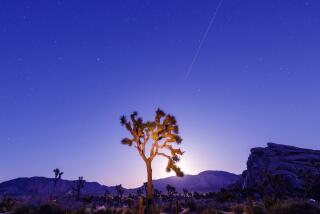Proto-planet Vesta’s weathering is unlike other airless bodies
The giant asteroid Vesta, sometimes known as a proto-planet, has a surface unlike any other airless body previously observed. While Earth’s moon and other airless bodies are generally a relatively uniform gray, Vesta’s bright background is streaked with large amounts of a much darker substance. New results from the Dawn probe indicate that the black material is largely carbon that has been deposited by other, smaller asteroids.
The moon and other airless bodies like it exhibit a form of weathering, even though the lack of an atmosphere prevents weather as we know it. Over billions of years, the bodies have become gray as a result of exposure to the solar wind and bombardment by micrometeorites. As a result of those factors, the fine dust particles on the surface are coated with iron-containing compounds that gives them a gray color.
Early images of Vesta from Dawn indicate that the asteroid has a much more highly patterned exterior, with splotches of dark material on a bright background. The asteroid’s brightness range is, in fact, the greatest observed in the solar system.
Astronomers offered many potential explanations for the brightness pattern, with the most widely accepted being that impacts by meteors melted and darkened the underlying rock; others suggested that the dark patches resulted from volcanic activity.
But new data from Dawn’s year in orbit around Vesta, published Wednesday in the journal Nature, provide a much different explanation. First, the data show that there are no traces of iron on the surface of the asteroid. Second, they demonstrate the presence of carbon and hydrated minerals.
“Ever since Dawn arrived at Vesta and we saw the bright and dark streaks across the surface, we have wondered how the zebra got her stripes,” said astronomer Christopher R. Russell of UCLA, the principal investigator of the Dawn mission. “Now we know that the bright streaks and spots are due to pure early Vestan material, and the dark patches are deposits on the surface most probably due to collisions with material from the dark outer reaches of the asteroid belt.”
Russell and his team calculated that to get the amount of darkening observed on Vesta would require it being struck by about 300 dark asteroids with diameters ranging from 0.6 to 6 miles over the past 3.5 billion years. Those objects would have been enough to wrap Vesta in a blanket of mixed material about 3 to 7 feet thick.
“Vesta has been recording the history of the solar system from the beginning -- more than 4.5 billion years ago,” he said. “We’re going further back than ever before on the surface of a body.”
Dawn departed Vesta in September and is now heading for the distant asteroid Ceres, which is the largest object in the asteroid belt. The spacecraft is scheduled to rendezvous in 2015, orbiting for at least five months.
Ceres appears to be even darker than Vesta, and researchers hope to learn much more about the origin of the solar system from it.






